[Part 01]
[Benton Bradberry’s 2012 book, “The Myth of German Villainy” is a superb, must-read, revisionist look at how the German people have been systematically, relentlessly and most importantly, unjustly vilified as the arch criminal of the 20th century. Bradberry sets out, cooly and calmly as befits a former US-Navy officer and pilot, to show why and how the German people have been falsely accused of massive crimes and that their chief accuser and tormenter, organized jewry is in fact the real party guilty of monstrous crimes against Germans and the rest of the world — KATANA.]
NOTE: The author has very generously given me permission to reproduce the material here — KATANA.
The Myth of
German Villainy
by
Benton L. Bradberry
Front and Back Cover Text
Neither Kaiser Wilhelm nor Adolf Hitler wanted war. Both WWI and WWII were thrust upon Germany by the Allied powers. Germany’s great sin was emerging too late as a consolidated nation-state and upsetting the long established balance of power scheme in Europe. The already established great powers, Britain, France and Russia, joined together in 1914 to destroy this new rival. When Germany rose phoenix-like from the ashes of WWI to again become a great power, they finished. the job with World War II. The deliberate destruction of Germany during the Second World-War can only be compared to the Roman destruction of ancient Carthage, and it was done for the same reason — to destroy a commercial rival. The “official” history of World Wars I & II, the story we learned in school, is a myth.
As the title “The Myth of German Villainy” indicates, this book is about the mischaracterization of Germany as history’s ultimate “villain“. The “official” story of Western Civilization in the twentieth century casts Germany as the disturber of the peace in Europe, and the cause of both World War I and World War II, though the facts don’t bear that out.
During both wars, fantastic atrocity stories were invented by Allied propaganda to create hatred of the German people for the purpose of bringing public opinion around to support the wars. The “Holocaust” propaganda which emerged after World War II further solidified this image of Germany as history’s ultimate villain. But how true is this “official” story? Was Germany really history’s ultimate villain? In this book, the author paints a different picture. He explains that Germany was not the perpetrator of World War I nor World War II, but instead, was the victim of Allied aggression in both wars. The instability wrought by World War I made the 1917 Bolshevik Revolution in Russia possible, which brought world Communism into existence. Hitler and Germany recognized world Communism, with its base in the Soviet Union, as an existential threat to Western, Christian Civilization, and he dedicated himself and Germany to a death struggle against it. Far from being the disturber of European peace, Germany served as a bulwark which prevented Communist revolution from sweeping over Europe. The pity was that the United States and Britain did not see Communist Russia in the same light, ultimately with disastrous consequences for Western Civilization. The author believes that Britain and the United States joined the wrong side in the war.
About the Author
Benton L. Bradberry served as an officer and aviator in the U.S. Navy from 1955 to 1977, from near the beginning of the Cold War to near its end. His generation was inundated with anti-German propaganda and “Holocaust” lore. Then, in his role as a naval officer and pilot, he was immersed in anti-Communist propaganda and the war psychosis of the Cold War era. He has had a life-long fascination with the history of this period and has read deeply into all aspects of it. He also saw much of Europe during his Navy years and has travelled widely in Europe since. A natural skeptic, he long ago began to doubt that the “propaganda” told the whole story. He has spent years researching “the other side of the story” and has now written a book about it. The author is a graduate of the Naval Post Graduate School in Monterey, California with a degree in Political Science and International Relations.
____________________
Contents
[Clicking on a link in the Contents here will take you to that Part, in a separate post]
[Part 01]
Chapter 1 – The Myth of Germany as an Evil Nation
Germany’s Positive Image Changes Overnight
[Part 02]
Chapter 2 – Aftermath of the War in Germany
The Versailles Treaty
Effect of the Treaty on the German Economy
Was the War Guilt Clause Fair?
Did Germany Really Start the War?
[Part 03]
Chapter 3 – The Jewish Factor in the War
Jews at the Paris Peace Conference
Jews in Britain
[Part 04]
Chapter 4 – The Russian Revolution of 1917
Bolsheviks Take Control
Jews and the Russian Revolution
Origin of East European Jews
Reason for the Russian Pogroms Against the Jews
Jews Leave Russia for America
Financing the 1917 Revolution
Jews in the Government of Bolshevik Russia
[Part 05]
Chapter 5 – The Red Terror
Creation of the Gulag
Bolsheviks Kill the Czar
Jews as a Hostile Elite
The Ukrainian Famine (Holodomor)
[Part 06]
Chapter 6 – The Bolshevik Revolution Spreads Throughout Europe
Jews in the Hungarian Revolution
Miklos Horthy Saves Hungary
Jews in the German Revolution
The Spartacist Uprising in Berlin
Jewish Bolsheviks Attempt to Take Italy
Jewish Bolsheviks Attempt to Take Spain — The Spanish Civil War
Czechoslovakia in Danger of Communist Takeover
The Comintern’s Aim? World Domination!
[Part 07]
Chapter 7 – The Nation of Israel
History of the Expulsion of Jews
[Part 08]
Chapter 8 – Jews in Weimar Germany
Jews Undermine German Culture
[Part 09]
Chapter 9 – Hitler & National Socialists Rise to Power
The 25 Points of the National Socialist Party
[Part 10]
Chapter 10 – National Socialism vs. Communism
National Socialism
Jews Plan Marxist Utopia
[Part 11]
Chapter 11 – Jews Declare War on Nazi Germany
Text of Untermeyer’s Speech in New York
The Jewish Persecution Myth
Effect of Boycott on the German Economy
Jewish Exaggerations are Contradicted by Many
[Part 12]
Chapter 12 – The Nazis and the Zionists Actually Work Together for Jewish Emigration out of Germany
The Nuremberg Laws – 1935
The Zionist Movement
[Part 13]
Chapter 13 – Life in Germany Under Hitler
Night of the Long Knives
1934 Annual Nazi Rally at Nuremberg
Hitler Revives the German Economy
Hitler Becomes the Most Popular Leader in the World
[Part 14]
Chapter 14 – Hitler Begins Reclamation of German Territory
Chapter 15 – The 1936 Olympics
[Part 15]
Chapter 16 – “Anschluss”. The Unification of Austria and Germany
Austrian Economy Revived
Austria’s Jews
[Part 16]
Chapter 17 – Germany Annexes the Sudetenland
[Part 17]
Chapter 18 – War with Poland
The Polish Problem
Hitler’s Proposal to Poland
Kristallnacht
German-Polish Talks Continue
Jews Influence both Roosevelt and Churchill
British and American Political Leaders Under Jewish Influence
Roosevelt’s Contribution to Hostilities
Lord Halifax Beats the War Drums
Germany Occupies Bohemia and Moravia
Roosevelt Pushes for War
Anti-war Movement Becomes Active
Poles Murder German Nationals Within the Corridor
[Part 18]
Chapter 19 – The Phony War
Russo-Finnish War
The Norway/Denmark Campaign
German Invasion of Denmark and Norway
Churchill Takes Chamberlain’s Place as Prime Minister
[Part 19]
Chapter 20 – Germany invades France Through the Low Countries
The Phony War Ends.
Churchill the War Lover
The Fall of France
Hitler Makes Peace Offer to Britain
[Part 20]
Chapter 21 – The Allied Goal? Destruction of Germany!
[Part 21]
Chapter 22 – Germany as Victim
Rape and Slaughter
Jewish Vengeance
The Jewish Brigade
[Part 22]
Chapter 23 – Winners and Losers
Preface
I served in the United States Navy from 1955 until 1977, mostly as a Navy pilot, and saw a lot of the world as a result. Aircraft carriers on which I served regularly visited European ports, as well as other ports around the world. I have also traveled extensively in the years since leaving the Navy.
After traveling around most of Europe, Germany emerges as my favorite country. During our visits there we found the German people to be pleasant, industrious, disciplined and civilized with many similarities to traditional Americans. They in no way resemble the stereotypes depicted in all the anti-Nazi movies, books and articles we have been subjected to over the years.
I was born in 1937, my generation grew up virtually inundated with anti-German propaganda. We were taught, quite literally, to hate the Germans as a people. Yet, Germans I have met or befriended through the years seem no different from other Europeans, or even Americans, and they seem no more inclined to violence and militarism than anyone else; if anything, less. I have never detected anything that might be considered intrinsically “wrong” with the German character. They are a highly cultured, highly civilized people in every respect. When studied objectively, even Germany’s leaders of the 1930s and 40s were essentially no different from other European leaders. They were only made out to be different by the relentless hate propaganda directed against them.
Germany suffered more than any other country by far as a result of World War II. Some 160 of her largest cities and towns were completely destroyed by the Allied bombing campaign and more than 21 million Germans lost their lives as a result of the war. Yet, no one wants to hear their tales of suffering, and no sympathy has been allowed the defeated and disgraced Germans. The anti-German propaganda has cultivated the general feeling that they got what they deserved.
The entire responsibility for starting both World War I and World War II, and for all the death and destruction resulting from them has been assigned to the Germans (though the facts don’t bear that out). Because they were the losers of both wars, they were never permitted to present their case before the world court, nor to tell their side of the story through any medium. The winners of wars, after all, write the history books. Neither did the true story of what happened during the war come out in the Nuremberg Trials. The Nuremberg Trials were nothing more than Soviet style show trials which violated every standard of traditional British and American justice. Their purpose was not to discover guilt or innocence, but to spread a legal gloss over a decision which had already been made to execute Germany’s leaders. The entire Nuremberg circus was a sham and a travesty.
The anti-German propaganda, used to create the climate of hatred that made the massive destruction and the mass slaughter of German civilians possible, continued relentlessly long after the war was over when it would seem natural for sober minded historians to begin to moderate their extreme views about Germany. The fantastic atrocity stories continue even today. One needs only to tune in to the History Channel to see them repeated again and again. In contrast, World War I was not long over before the atrocity stories attributed to the Germans during that war were exposed as the deliberate lies they were. Responsible men conducted thorough investigations and found that none of it was true. All the lurid stories were deliberately fabricated to win British public support for the war against Germany and also to bring America into the war.
But a different factor was in play after World War II to keep the phony horror stories alive which did not exist after World War I. After WWII, the Jews exploited the anti-German world sentiment, which they themselves had largely created with their propaganda, to justify the creation of their long sought after state of Israel as a homeland for the Jewish people. These manufactured horror stories also served to disarm critics of Jews as they set about to regain power and control in Europe.
Through manipulation of the international information media, the Jews won worldwide sympathy for themselves with their sensational stories of unique Jewish suffering at the hands of the cruel Germans. They claimed that Germany had followed a systematic plan to exterminate all of Europe’s Jews and that by war’s end had managed to kill 6 million of them. The alleged method was to round the Jews up from all over Europe, haul them in sealed trains to so-called “death camps” where they were herded into gas chambers and killed, and their bodies then burned in giant crematoria, with, conveniently, no forensic evidence of what had happened left behind. In the absence of forensic evidence, eye witness testimony, no matter how bizarre, sufficed to convict Germany and to make her the pariah of civilized nations.
The judges at the Nuremberg Trials were themselves not immune to the torrents of anti-German hate propaganda, and were already predisposed before the trials ever began to believe any horror story, no matter how fantastic, about the Germans. Another factor which preordained the outcome of the trials was that the accusers also served as investigators, prosecutors and final judges. Moreover, the trials were also permeated throughout with an atmosphere of Jewish vengeance seeking. Just behind the Gentile front men, most of the lawyers, prosecutors, and investigators were Jews. Hundreds of Jews who could barely speak English disported themselves in American Army officer uniforms. Two of the eight Nuremberg judges were Jews, Robert Falco of France, and Lt. Col. A.F. Volchkov (real name Berkman) of the Soviet Union. The General Prosecutor for the “High Court” was Dr. Jakob Meistner, a Jew. Their dominance and control of the trials was blatant. Even the hangman for the 10 Nazi leaders sentenced to death, Master Sergeant John C. Woods, was a Jew. As a demonstration of just how blatant their dominance was, they scheduled the hangings to take place on October 16, 1946, the Jewish holiday of “Purim.” In the Book of Esther, the 10 sons of Haman, an enemy of the Jews, were hanged on Purim day. On Purim day in 1946, 10 German leaders were hanged. This was obviously not a coincidence.
According to Louis Marschalko, a wartime Hungarian journalist who wrote about the trials:
“Out of 3,000 people employed on the staff at the Nuremberg Courts, 2,400 were Jews.”
The Holocaust story that we all know so well today was developed during the Nuremberg Trials.
By skillfully cultivating and propagating this Holocaust story, the Jews have been able to extort hundreds of billions of dollars out of Germany, as well as the United States, much of which was used to fund the new state of Israel. The claim that the Jews in Israel “made the desert bloom” was true. They did it with German and American money. They are now hard at work extorting more billions out of other European countries in what has been contemptuously but correctly called “the Holocaust industry.”
Even today, 70 years after the war, more than half a million so-called “Holocaust survivors” living mainly in Israel and the United States receive lifetime pensions from the German government. And what is a “Holocaust survivor?” Any Jew who lived anywhere in German controlled territory at any time during the war, whether living in a concentration camp or in the lap of luxury, is a Holocaust survivor and therefore eligible for a German pension. Moreover, any Jew who was forced to leave Europe during the Nazi era (even if he is a Hollywood producer) is a Holocaust survivor, and also eligible for a German pension. Some 4.39 million Jews were originally designated “Holocaust survivors.” Christian survivors of the war, no matter how horrific their experience are not eligible for pensions. “Shoah” is the Hebrew word for Holocaust. It has been joked around that “there’s no business like shoah business.” The entire Holocaust racket has become nothing so much as a vast shakedown of European countries, especially Germany. The Holocaust story has other uses as well. It is routinely invoked to disarm the general public from defending itself against Jewish predations. Prime Minister Netanyahu regularly invokes the Holocaust to justify Israeli attacks upon its neighbors, and the confiscation of its neighbors’ lands.
Keeping this gravy train moving requires the continued legitimization of Jews as history’s ultimate victim group, which, in turn, requires an ultimate victimizer of the Jews, and Germany has been designated to fill that role in perpetuity. The Jewish controlled History Channel, or the “Hitler Channel,” as it is sometimes derisively called, owes its success to endlessly repeating these anti-German propaganda programs. Any modification or revision of this carefully cultivated image of Germany as the evil monster of history, and particularly as the evil victimizer of the Jews, would threaten the entire Holocaust story. Therefore this image is jealously and carefully guarded by the Jewish controlled press and information media, and woe upon anyone who dares to question it. Anyone who does so is immediately attacked and smeared as a deranged anti-Semite. As a result of Jewish pressure, some 17 countries have made questioning, or even investigating, the Holocaust a crime which can get one a prison sentence.
The Jews are also unwilling to relinquish or even to moderate their quest for revenge. Old men who have suffered all their lives as fugitives, are still being tracked down as “war criminals,” and either “brought to justice,” or summarily murdered on the spot. (The MOSSAD, Israel’s equivalent of our CIA, is an assassination organization.) The only crime these old men may be guilty of was being an officer or soldier in the German army during the war.
But, why, one might ask, amidst all the carnage, death and destruction that occurred during World War II, has the so-called Holocaust emerged as the central atrocity story? Approximately 55 million people died during the war, only a tiny percentage of them Jews ― surely only a fraction of the 6 million claimed. All other combatant nationalities have long since put the war behind them and have tried to make peace with their former enemies, but not the Jews! More than two thirds of a century has gone by, but the Jews are still nourishing their grievances, still building Holocaust museums and memorials (not at their own expense, but at the expense of host governments), and still investigating new ways to extort money out of various countries as “compensation.” But why should only the Jews be compensated? Scores of millions of other people across Europe lost everything in the war.
The “Holocaust” has evolved over the years to become the national myth of the Jewish people with all the characteristics of a religion, complete with its very own Satan ― Hitler. The Holocaust myth is the glue that holds the Jewish people together as a distinct nationality, and because of that they carefully guard and protect it. As a consequence, the poor Germans are consigned in perpetuity to the role of history’s evil monster, regardless of what the actual facts may be.
But even if all the stories of German atrocities during WWII were true in every detail (which they are not), they would still not compare in their inhumanity to the atrocities committed against the Germans. The indiscriminate saturation bombing of German cities, the brutal expulsion of entire German populations after the war, the Allied imposed postwar deprivations, the Soviet massacres and political liquidations, simply dwarf the Holocaust in their destruction of human life and their destruction of the accumulated works of human civilization. Any final accounting and balancing of the conduct of all combatants during WWII could only result in the exculpation of Germany as “uniquely” barbarous in her methods of waging war, or in her treatment of subject populations.
The German people were devastated by the war, to a greater extent than any other participant, including the Jews, while at the same time they have been stigmatized as the evil, predatory perpetrators of the war. They have been made to pay a terrible price for atrocities during World War II which very probably never occurred, or at least, never occurred to the extent alleged. It is becoming clearer as time goes by that the Germans were the real victims of both World Wars I and II, and continue to be.
Chapter 1
The Myth of Germany as an Evil Nation
As the result of losing two apocalyptic world wars, Germany has acquired a reputation as the evil nation of Europe, and, perhaps the evil nation of all time. Just mentioning the word “German” still brings forth an image in the mind’s eye of robotic, goose-stepping storm troopers, under the command of stiff-necked Prussian officers, ready to march off to inflict gratuitous murder and destruction upon their peace loving neighbors. We have been brainwashed by relentless propaganda to regard the Germans as intrinsically militaristic, aggressive, brutish, racist and anti-Semitic, with a predilection for blind obedience to authority figures. Hundreds of Hollywood movies, relentless Holocaust propaganda, and countless books and magazine articles have permanently reinforced this negative image of Germany in the popular mind. Rational motives for the inexplicable horrors Germans are accused of having routinely committed are not required. It is axiomatic that their evil nature explains it all.
Consider the movie, “Schindler’s List,” by the Jewish director, Stephen Spielberg, for example. The Nazi commandant of the concentration camp (supposedly the Plaszow camp outside of Krakow, not far from Auschwitz), is standing shirtless on the balcony of his house with a hunting rifle over his bare shoulders. The rifle is equipped with a telescopic sight. In the movie, the house is located on a hill above the camp so that he can look down on the throngs of prisoners milling around in the compound below. He lifts the rifle to his shoulder and through the telescope begins casually scanning from one prisoner to another. The image through the telescope now fills the movie screen. The crosshairs of the scope stop on a randomly selected prisoner. He pulls the trigger and the prisoner drops to the ground, dead.
[Add. image — The actor Ralph Fiennes as Amon Goeth in the fictional story Schindler’s List, picking off camp inmates from his balcony.]
The screen then cuts back to the Nazi commandant to show bored insouciance as he actuates the bolt of his rifle and casually raises it back to his shoulder. He fires again, and again a prisoner drops to the ground, dead. Bored with his “target practice,” he turns his attention to the beautiful, sexy, naked woman lying on a bed just inside the house from the balcony. The woman is purportedly one of his Jewish housemaids selected from the camp, who also apparently serves as his sex slave. His face expresses disdainful, though lackadaisical, cynicism.
The point of the shootings, as well as bringing in the naked, Jewish housemaid, is to show the Nazi officer as totally depraved, without conscience, morality, or empathy for other humans; in short, a psychopath. It is presumed, of course, that the murdered prisoners were all Jews. Two popular Jewish themes are combined here: Nazi evil and Jewish persecution.
This episode is entirely fictional, based on a novel by Thomas Keneally, an Australian, who only visited the concentration camps once in 1980. No such actual event as described above has ever been recorded, yet the vast majority of movie goers swallow it whole and accept it as actual history.
The real Plaszow camp was located on the other side of a hill from the commandant’s house, and completely out of sight from the commandant’s balcony. It would have been impossible for him to shoot down into the compound as shown in the movie even if he had been inclined to do so, which is highly unlikely. The actual commandant of Plaszow, Amon Goeth, on which the character in the movie was based, lived in the house with his fiancé Ruth Kalder, with whom he had a child. Ruth said that they intended to marry but were unable to do so due to the chaos at the end of the war. She had her name and the child’s name changed to Goeth after the war with the help of Amon Goeth’s father. Amon Goeth was hanged after the war by the Polish government primarily for being a member of the Nazi party and a member of the Waffen-SS, not for shooting prisoners. Ruth described Amon Goeth as a cultured man who had a beautiful singing voice. Goeth did, indeed, have two Jewish housemaids, selected from the camp while he was commandant, but there is no information that he had untoward relations with them. That story was only included to add spice to the movie.
https://www.youtube.com/watch?v=RaPBzhEsCL0
[Add. image — Screen shot of the movie Sophie’s Choice.]
Another example is the movie, “Sophie’s Choice,” by another Jewish director, Alan J. Pakula, in which “Sophie” and her two small children are sent to Auschwitz (Auschwitz is the holy temple of Holocaust lore). During the “selection” process (the “selection” is now one of the “stations of the cross” of the Holocaust religion) immediately after their arrival, Sophie is told by a stereotypically evil Nazi officer (supposedly Dr. Joseph Mengele of Auschwitz notoriety) that she can only keep one of her children and that the other must go to the gas chamber. She is forced to choose which one to keep and which one to be sent to the gas chamber, hence, “Sophie’s choice.” The evil Nazi officer provides no reason or explanation for requiring one child to die or for forcing her to make this heart rending choice. That he is an “evil” Nazi is presumed to be explanation enough. This preposterous movie was based on a novel by the American Southern writer William Styron, who had no firsthand knowledge of the camps. Auschwitz was simply used as the setting for a tale which came out of his imagination. Nothing of the sort ever happened in real life. Yet, evil Nazi stories such as these have long been a staple in Hollywood. The movie-going public has been so conditioned by this poppycock that fiction has become fact in the public mind. We have all been brainwashed to accept such absurdities without skepticism. Germans are “evil,” so they do “evil” things. No further explanation needed.
Yet, Germany was not always seen in this light. The image of Germany as a sinister, predatory, warlike nation only took root in the twentieth century. Nineteenth century Germany, by contrast, was seen as a place of peace and enlightenment. The English historian, Frederic William Maitland, described the way the English people saw the Germans during the nineteenth century:
“…it was usual and plausible to paint the German as an unpractical, dreamy, sentimental being, looking out with mild blue eyes into a cloud of music and metaphysics and tobacco smoke.”
The highly influential French writer and Salon matron, Madame de Stael, portrayed the Germans during the period of the Napoleonic Wars as a nation of;
“poets and thinkers, a race of kindly, impractical, other-worldly dreamers without national prejudices and disinclined to war.”
The Americans also held a benign opinion of the Germans prior to the twentieth century. The American historian, Henry Cord Meyer, wrote;
“…whether seen in their newly united nation [Germany was united into one nation in 1871] or in this country [German immigrants in the United States], the Germans were generally regarded as methodical and energetic people who were models of progress, while in their devotion to music, education, science, and technology they aroused the admiration and emulation of Americans.”
In 1905 Andrew Dickson White, a noted American historian, educator, and United States Ambassador to Germany, wrote just nine years before the outbreak of World War I:
“Germany, from a great confused mass of warriors and thinkers and workers, militant at cross-purposes, wearing themselves out in vain struggles, and preyed upon by malevolent neighbors, has become [after consolidation] a great power in arms, in art, in science, in literature; a fortress of high thought; a guardian of civilization; the natural ally of every nation which seeks the better development of humanity.”
The German people have historically made great contributions in every sphere of cultural, intellectual, and scientific achievement. In the field of music, there were such eighteenth century geniuses as Bach, Hayden, Mozart, Beethoven, Schubert and Schumann, to name a few. This musical genius continued in the nineteenth century with the Strausses, Mahler and Richard Wagner. There were the literary contributions of Goethe and Schiller; the historical works of Ranke and Niebuhr; the philosophical studies of Kant and Hegel; and the great scientific contributions of Alexander von Humboldt and William Conrad Roentgen. These are only a few examples of a very long list. The Prussian system of higher education and the cultural flowering which characterized Prussia during the years following the Napoleonic wars greatly influenced both Europe and America. The American public school system as well as our university system was deliberately modeled after the Prussian public school system and university system. Germany was admired by the world as a center of learning, for its high culture and for its achievements in every field; but also for its culture of honesty, hard work, orderliness and thrift, which existed even at the lowest level of society.
British scholars and journalists had been very favorably disposed toward all things German, including their history, culture, and institutions throughout the nineteenth century. The highly respected Cambridge historian Herbert Butterfield commented extensively on Britain’s high regard for Germany.
“In England the view once prevailed that German history was particularly the history of freedom, for it was a story that comprised federation, parliament, autonomous cities, Protestantism, and a law of liberty carried by German colonies to the Slavonic east. In those days it was the Latin States which were considered to be congenial to authoritarianism, clinging to the Papacy in Italy, the Inquisition in Spain and the Bonapartist dictatorships in militaristic France. The reversal of this view in the twentieth century, and its replacement by a common opinion that Germany had been the aggressor and enemy of freedom throughout all the ages, will no doubt be the subject of historical research itself someday, especially as it seems to have coincided so closely with a change in British foreign policy … Up to the early 1900’s when historical scholarship in England came to its peak in men like Acton and Maitland, words can hardly describe the admiration for Germany ― and the confessed discipleship ― which existed amongst English historians.”
And then British author Thomas Arnold (June 13, 1795 – June 12, 1842) saw Germany not as a nation with a unique predisposition toward authoritarianism and regimentation, but rather as a “cradle of law, virtue, and freedom,” and considered it a “distinction of the first rank” that the English belonged to the Germanic family of peoples. The following photos and drawings represent the way in which the world saw Germany during the eighteenth and nineteenth centuries, right up to the beginning of World War I. Pre-WWI Germany was seen as a peaceful land of fairy tales and dreamy castles, and of industrious, law abiding, disciplined people.
Germany’s positive image changes over night
This view of Germany was to change almost overnight with the outbreak of World War I. After the war began in 1914 a grotesque image of a rapacious, bloodthirsty and uniquely aggressive Germany quickly took form and became the stereotypical image of Germany in Europe and America. This new image of Germany was the direct result of a virulent anti-German propaganda campaign conducted by the British government and later joined by the United States government in which deliberate and systematic lies, distortions and false atrocity stories were disseminated to the British and American publics. The emotions of both the British and American publics were deliberately whipped up to a fever pitch of hatred for the “Hun.” A pathological hostility towards all things German, which later became such a familiar and integral part of Western thinking about Germany, had its birth in this skillful propaganda campaign. After World War Two, historian Harry Paxton Howard examined this transformation of Germany’s reputation which began immediately after the start of WWI.
It was made out, he said, that Germany was not only evil but had always been that way, and that Germany, contrary to the facts, had always been the historical enemy of Europe and America. He wrote:
“Actually, in the literal sense of the word, the biggest job of revising history was done during the First World War when our ‘histories’ were completely revised to show that Germany had always been our enemy, that Germany had started the war in 1914, that Germany had even started the Franco-Prussian War in 1870, and that in the Revolutionary War we had not been fighting the British but the Hessians ― not to mention such things as the Germans cutting the hands off Belgian babies, instead of the Belgians cutting off the hands of Congolese. This was a real revision of our histories which has distorted the American mind for more than forty years.” Harry Paxton Howard.
All belligerents, of course, including Germany, used propaganda against their enemies, as all belligerents have done in all wars throughout history, but the propaganda efforts of Germany and the Central Powers were amateurish and ineffectual compared to the British. In their propaganda efforts, the Germans tended to appeal to reason instead of to the emotions.
They never portrayed their enemies as bloodthirsty, inhuman beasts. The Allies, Great Britain in particular, by contrast, proved themselves masters at adroitly manipulating world opinion by widespread propagation of fantastic tales of German villainy. From the beginning of the war, stories of German atrocities filled British and American newspapers. (American newspapers depended at that time on British news services for most of their news stories about Europe, which came across undersea cables controlled by Britain. The Germans had no access to the American media. Great Britain made sure of that by cutting Germany’s six trans-Atlantic cables to America.)
The first atrocity stories came out of the German march through Belgium at the beginning of the war. Germany’s purpose was not to attack Belgium, per se, but to pass through Belgium in order to outflank French defenses and then make a drive toward Paris. This strategy was known as the Schlieffen Plan, which the Germans believed was the only way to achieve a quick victory over France.
Germany’s “violation” of neutral Belgium served as Britain’s pretext for going to war against Germany, though the decision to go to war for other reasons (mainly economic) had already been made. Belgium was only a pretext. To enter the war, it was necessary to win public support, and the propaganda opportunities resulting from Germany’s invasion of Belgium, as well as the fabricated stories of German atrocities in Belgium served that purpose. “Eyewitnesses” were found who described hairy knuckled Huns in Pickelhaube helmets tossing Belgian babies in the air and catching them on their bayonets as they marched along, singing war songs. Stories of German soldiers amputating the hands of Belgian boys were widely reported (reputedly to prevent them from firing rifles). Tales of women with their breasts cut off multiplied even faster. There were also tales of crucifixions of Allied soldiers. Europeans and Americans were more religious then than they are today and the crucifixion stories aroused outrage. (It should be mentioned that of all forms of evidence accepted in modern courts of law, eyewitness testimony is considered the least reliable.)
But rape stories were the favorite of all atrocity tales. One “eyewitness” described how the Germans dragged twenty young women out of their houses in a captured Belgian town and stretched them on tables in the village square, where each was raped by at least twelve “Huns” while the rest of the soldiers watched and cheered.
After being fed a steady diet of this kind of propaganda, the British public veritably demanded revenge against the loathsome Hun. A group of Belgians toured the United States (at British government expense) telling these stories to Americans. (Britain wanted to draw the United States into the war.) President Woodrow Wilson solemnly received the group in the White House.
The propaganda portrayed Britain as “a knight on a white horse” coming to the defense of violated, neutral Belgium. This was cynical manipulation of public opinion, of course, because if Germany had not violated Belgian neutrality, Britain would have done so without a second thought.
Germany angrily denied all of these stories. So did American reporters who were with the German army and knew that they were lies. But these denials did not find their way into American newspapers. The British controlled what went into American papers and it was the British who were generating the atrocity stories. To enhance the credibility of these fantastic atrocity stories, the British government asked Viscount Bryce early in 1915 to head a royal commission to conduct an investigation. The British government, of course, intended that Bryce would support this false propaganda, which he obediently did. Bryce was a well known historian with a good reputation in America. He not only had served as the British ambassador in Washington, but had written several complimentary books about the American government. The British knew that he was highly respected and admired in America, and that he had a reputation for rectitude and honesty. America would believe whatever he said. Bryce was also intensely loyal to his own country and therefore perfect for the job.
False anti-German propaganda poster of World War I
The propaganda poster shown at left [above] and in the following pages are examples of the way in which the British portrayed their German foes — always as brutish, barbaric murderers of women and children.
Following these British propaganda posters are German propaganda posters against the British, French and Russians. Note the different styles. The Germans do not portray their foes as barbaric murderers.
An innocent Belgian girl about to be raped by a Hun.
Following are German propaganda posters directed against the British, French and Russians. Note that the Germans use ridicule against their enemies but do not portray them as inhuman beast.
The cartoon characters represent (L to R): Great Britain, France and Russia, and far right, Germany.
[Patience! You all will get it!]
[Add. image — Beloved fatherland, relax!]
Bryce and his six fellow commissioners, all lawyers, historians and legal scholars, “analyzed,” if you can call it that, 1,200 depositions of “eyewitnesses” who claimed to have seen these German atrocities first hand. Almost all of the eyewitness accounts came from Belgians who had left Belgium for England as refugees, though some accounts also came from British soldiers in France. The commission never interrogated a single one of these eyewitnesses, but relied on their written statements instead (shades of the Nuremberg Trials after the next war). Since there was a war on, there were no “on site” investigations of any reported atrocity. Not a single witness was identified by name, including the soldiers who had provided written accounts. Yet, the commission officially confirmed that all the atrocity stories, no matter how fantastic, were true. This bogus investigation was just another part of Britain’s anti-German propaganda campaign.
[Add. image — The Bryce Report and its author, James Bryce.]
The “Bryce Report” was released on May 13, 1915, and the British government made sure it went to every newspaper in America. The impact was phenomenal, especially coming just after the torpedoing of the British liner Lusitania which caused the deaths of 135 Americans.
Americans from coast to coast were outraged. A wave of revulsion for all things German swept the country. Hatred of Germans reached fever pitch. Suddenly the American public was clamoring for war. (There is well founded suspicion that the Lusitania was set up as a decoy by the First Lord of the Admiralty, Winston Churchill, deliberately exposing it to a German submarine attack for the purpose of bringing America into the war).
But there were skeptics of the Bryce Report. In England, Sir Roger Casement called the report a lie, and wrote a report of his own refuting it, though no one paid much attention to it. The American lawyer, Clearance Darrow, was so skeptical that he travelled to France in 1915 and searched in vain for a single eyewitness who could confirm even one of the Bryce stories. Increasingly dubious, Darrow announced that he would pay $1,000, equivalent to around $25,000 today, to anyone who could produce a Belgian boy whose hands had been amputated by a German soldier, or any other Belgian or French victim who had been mutilated by German troops. None were found.
The “proofs” provided by the Bryce Committee in its investigation, as well as the methods employed in gathering them, violated every elementary rule of evidence. Careful scholars have long since demonstrated that the entire report was made up of nothing more than distortions and outright falsehoods. But Britain was determined to pull the United States into the war and Bryce and his colleagues were willing accomplices in that effort. They justified their lies and exaggerations because it served the higher cause of Mother England. After the war most historians dismissed 99 percent of Bryce’s atrocities as fabrications. One called the report “in itself one of the worst atrocities of the war.” “After the war,” recounts Thomas Fleming in his book Illusion of Victory;
“historians who sought to examine the documentation for Bryce’s stories were told that the files had mysteriously disappeared.”
[Add. image — Kaiser (to a 1917 recruit). “And don’t forget that your Kaiser will find a use for you—alive or dead.” Punch, 25 April 1917.]
As the war drew on, another fabricated story was widely circulated. It was reported that the Germans were operating a “corpse factory” where the bodies of both German and Allied soldiers killed in battle were supposedly melted down for fats and other products useful to the German war effort. The Germans were accused of making soap out of human fat. Human skins were used to make fine leather goods such as lampshades, driving gloves and riding breeches. The bones of these corpses were said to have been ground up and used as fertilizer on German farms.
A detailed account of this so-called “corpse factory” appeared in the highly respected British newspaper, The Times, on April 17, 1917.
According to the story, trains full of corpses arrived at a large factory. The bodies were attached to hooks connected to an endless chain. The article carefully described the process inside the corpse factory.
“The bodies are transported on this endless chain into a long, narrow compartment, where they pass through a bath which disinfects them. They then go through a drying chamber, and finally are automatically carried into a digester or great cauldron, in which they are dropped by an apparatus which detaches from the chain. In the digester they remain from six to eight hours, and are treated by steam, which breaks them up while they are slowly stirred by the machinery. From this treatment result several products. The fats are broken up into stearin, a form of tallow, and oils, which require to be redistilled before they can be used. The process of distillation is carried out by boiling the oil with carbonate of soda, and some of the by-products resulting from this are used by German soap makers. The oil distillery and refinery lie in the south-eastern corner of the works. The refined oil is sent out in small casks like those used for petroleum, and is of a yellowish brown color.” Note the meticulous detail.
The story was a total fabrication, but it was a “plausible” story, especially with all the detail, and it was not possible for the Germans to completely refute it while the war was still going on. After the war, of course, the story was exposed as the lie it was. No such corpse factory existed. It is interesting that the story of making soap out of bodies emerged again during World War II when the Germans supposedly made soap out of Jewish corpses. That lie is still widely believed and remains a staple of Jewish Holocaust propaganda. The “lampshades out of human skin” story also had its origin in World War I and emerged again during World War II when Germans were supposedly making lampshades out of Jewish skin. There was nothing to it, yet it also remains a staple of Jewish Holocaust propaganda.
“The purpose of war propaganda,” historian Thomas Fleming, in his book “The Illusion of Victory,” observes;
“as peddled by both the Anglo and American elite, was to create a widespread public image of Germans as ‘monsters capable of appalling sadism’ ― thereby coating an appeal to murderous collective hatred with a lacquer of sanctimony.”
“The trick,” said Fleming, “is to leave the target audience at once shivering in horror at a spectacle of sub-human depravity, panting with a visceral desire for vengeance, and rapturously self-righteous about the purity of its humane motives. People who succumb to it are easily subsumed into a hive mind of officially sanctioned hatred, and prepared to perpetrate crimes even more hideous than those that they believe typify the enemy.”
[Add. image — The Illusion of Victory by Thomas Fleming (2003)]
The Bryce Report as well as all the other anti-German propaganda unquestionably helped England win the war. It convinced millions of Americans and other neutrals that the Germans were beasts in human form, and this, as much as anything else, helped bring America into the war. But there were adverse consequences to this lurid atrocity propaganda campaign. It poisoned public opinion against the Germans to such an extent that it could not be undone. It was an obvious factor, for example, in the British decision to maintain the total blockade of Germany for seven months after the war was over, which, incidentally, was a violation of international law. The blockade caused a million German civilians to starve to death, and unbearable suffering of millions more. The blockade itself was far and away the greatest atrocity of World War I, though it receives very little publicity, and it was done, not by the evil Germans, but by the saintly British.
By creating blind hatred of Germany, the anti-German propaganda campaign also contributed to the harsh peace terms imposed on Germany at the end of the war, which then sowed the seeds of World War II. Though historians and other scholars have exposed these German atrocity stories as nonsense, the image of German villainy has remained fixed.
The benign world opinion of Germany which existed right up to 1914 was replaced overnight by the myth of unique German savagery which left a permanent residue of Germanophobia deep in Western minds. This explains why “our boys” were so willing to obliterate whole German cities and kill hundreds of thousands of German civilians with air bombardments during the Second World War. This hate propaganda, as false as it was, also had the effect of totally demoralizing the German people.
[END of Part 01]
_______________________
PDF Notes
* Total words = 7,550
* Total pages = 48
*Total images = 32
*Note: Images not in original book are indicated as “Add. image” (Additional image).
*Text in [square brackets] is not part of the original book.
*Special thanks to reader “mblaine” for providing the text for this book.
======================================
Click to download a PDF of this post (7.0 MB).
The Myth of Germany Villainy – Part 01 (Ver 2)
Click on a link to go to another part:
[Click images to enlarge]
Part 01 — Cover text; About the Author; Preface; Chapter 1: The Myth of Germany as an Evil Nation
Part 02 — Chapter 2: Aftermath of the War in Germany
Part 03 — Chapter 3: The Jewish Factor in the War
Part 04 — Chapter 4: The Russian Revolution of 1917
Part 05 — Chapter 5: The Red Terror
Part 06 — Chapter 6: The Bolshevik Revolution Spreads Throughout Europe
Part 07 — Chapter 7: The Nation of Israel
Part 08 — Chapter 8: Jews in Weimar Germany
Part 09 — Chapter 9: Hitler and National Socialists Rise to Power
Part 10 — Chapter 10: National Socialism vs Communism
Part 11 — Chapter 11: Jews Declare War on Nazi Germany
Part 12 — Chapter 12: The Nazis and the Zionists Actually Work Together for Jewish Emigration out of Germany
Part 13 — Chapter 13: Life in Germany Under Hitler
Part 14 — Chapter 14 & 15: Hitler Begins Reclamation of German Territory; The 1936 Olympics
Part 15 — Chapter 16: “Anschluss” The Unification of Austria and Germany
Part 16 – Chapter 17: Germany Annexes the Sudetenland
Part 17 – Chapter 18: War with Poland
Part 18 – Chapter 19: The Phony War
Part 19 – Chapter 20: Germany invades France – The Phony War Ends
Part 20 – Chapter 21: The Allied Goal? Destruction of Germany!
Part 21 – Chapter 22: Germany as Victim
Part 22 (last) – Chapter 23: Winners and Losers
See also:
The Myth of German Villainy: Author Ben Bradberry Interview — TRANSCRIPT
_____________________
Version History
Version 7: Mar 13, 2021 – Added new Go2 Cover images (3).
Version 6: Apr 7, 2020 — Re-uploaded images and PDF for katana17.com/wp/ version. Updated See Also links.
Version 5: Dec 9, 2018 — Improved formatting.
Version 4: Oct 8, 2016 — Expanded Table of Contents.
Version 3: Oct 3, 2016 — Updated cover image. Formatting. Added Ver 2 of PDF of post for download. Added links to other parts.
Version 2: Oct 2, 2016 — Added PDF of post for download.
Version 1: Oct 1, 2016 — Created post.

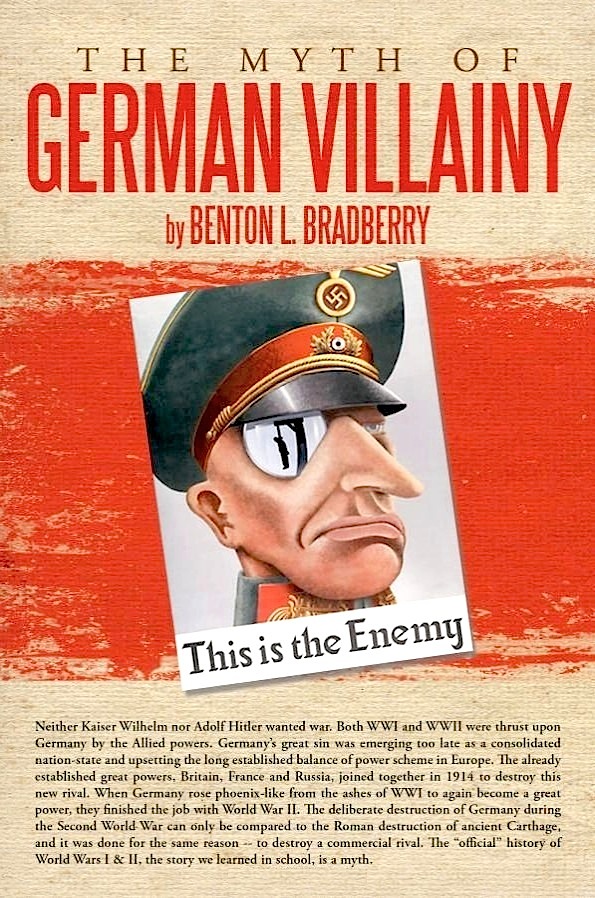




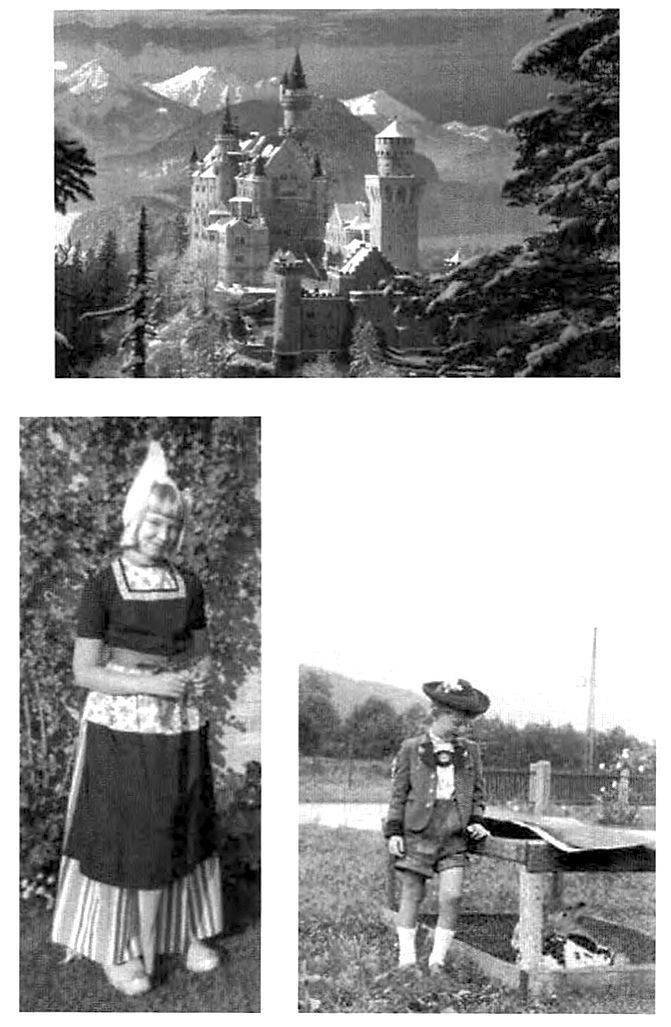
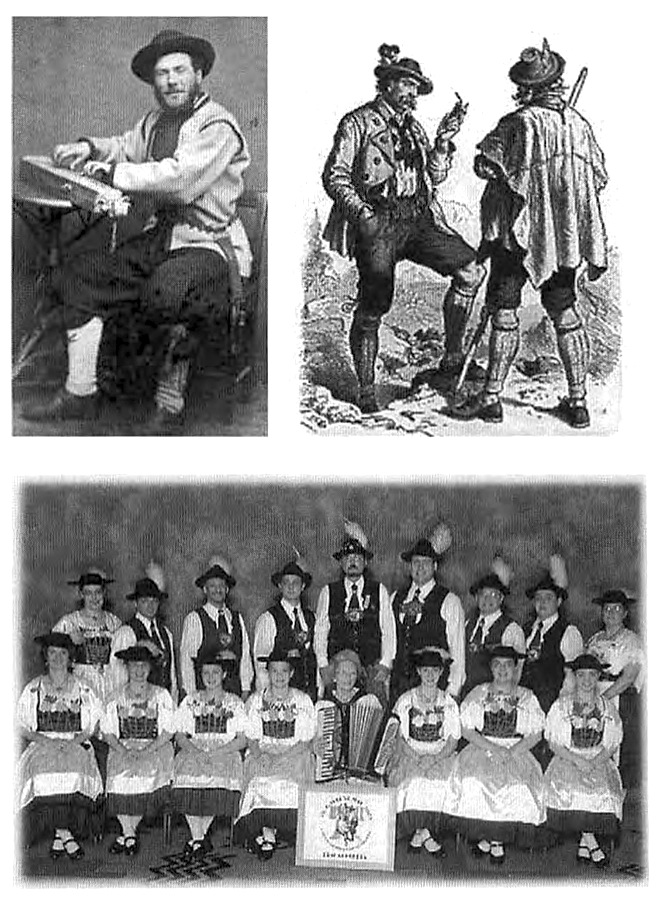
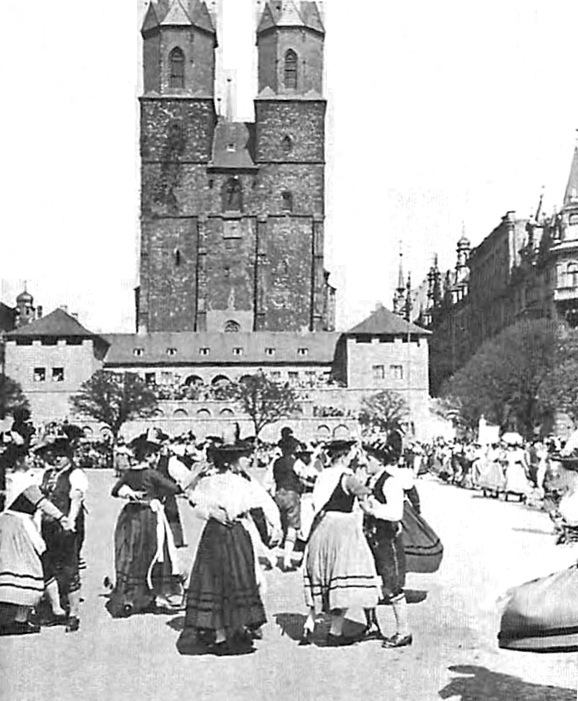
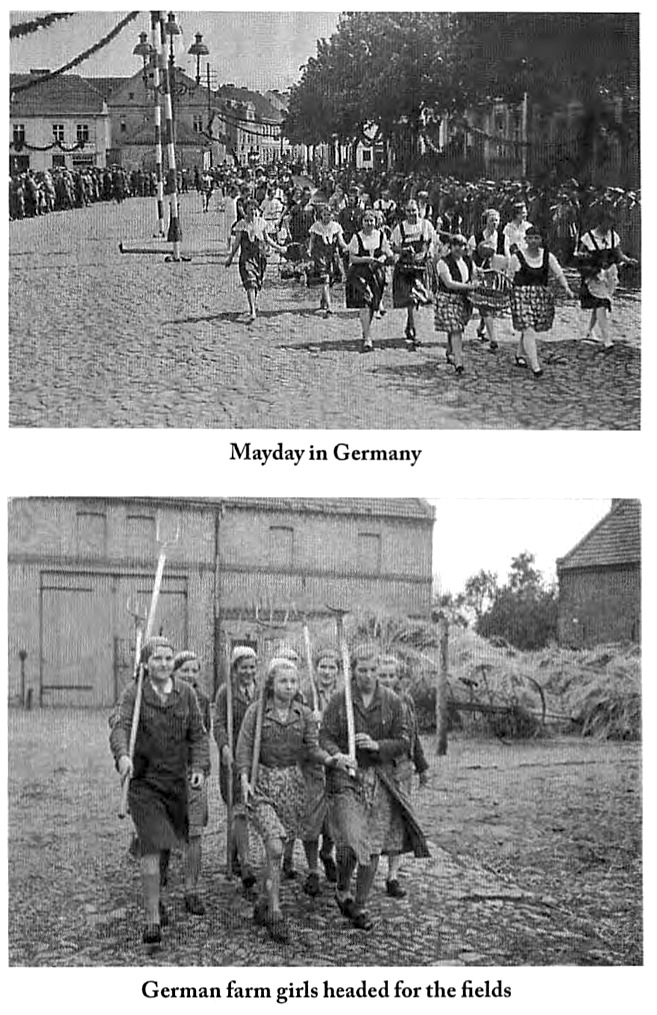
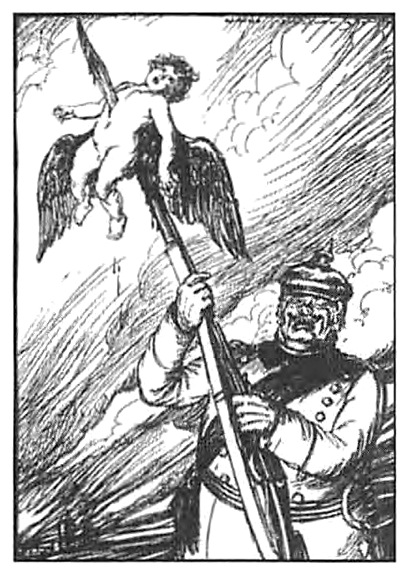

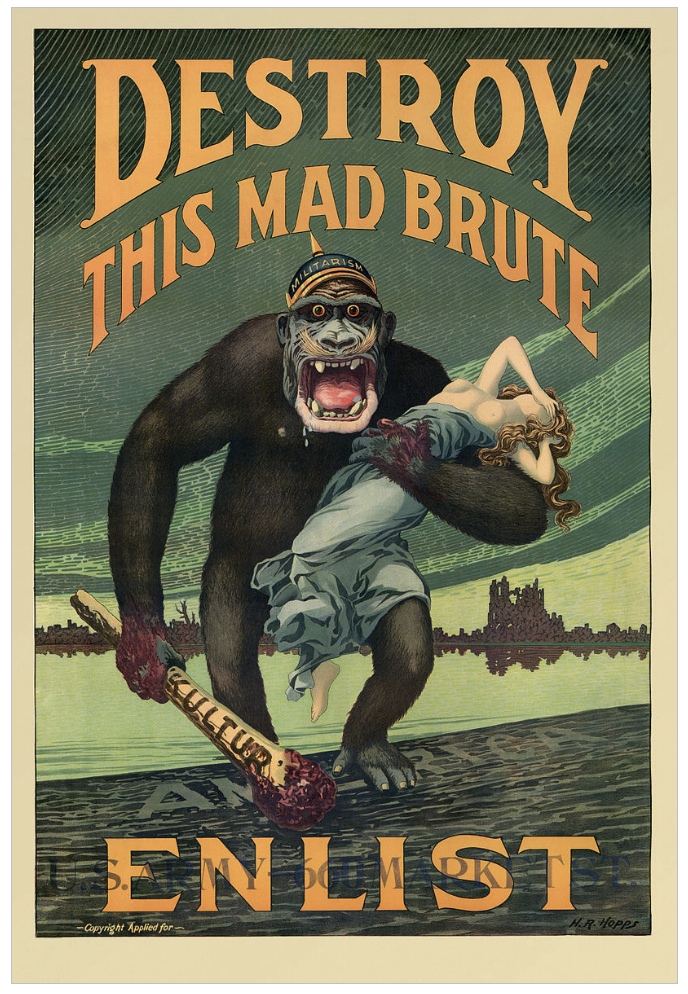

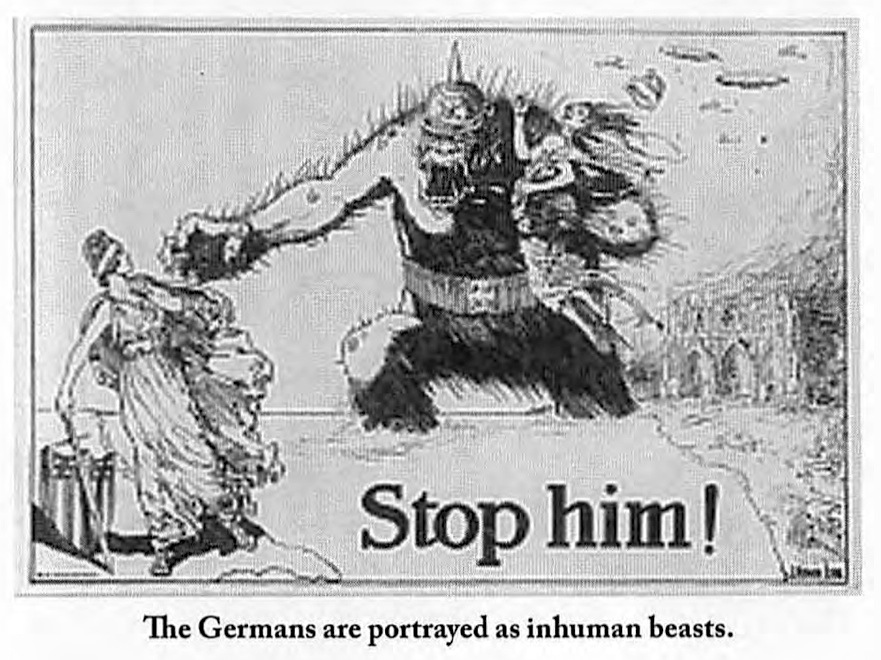
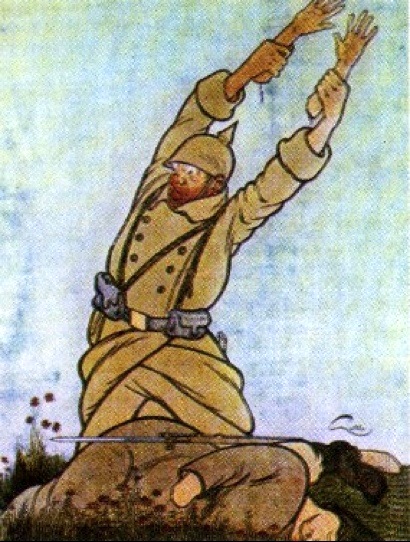
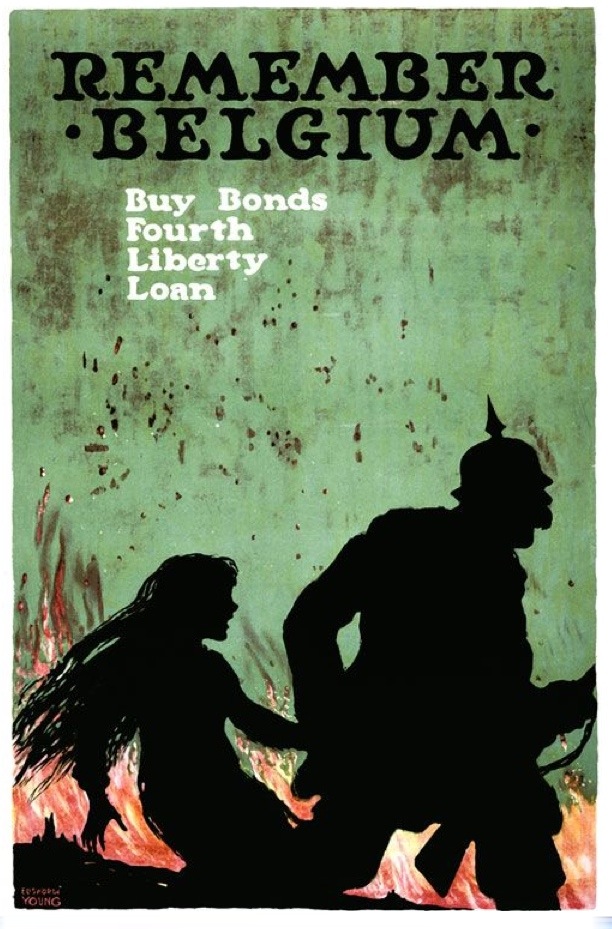
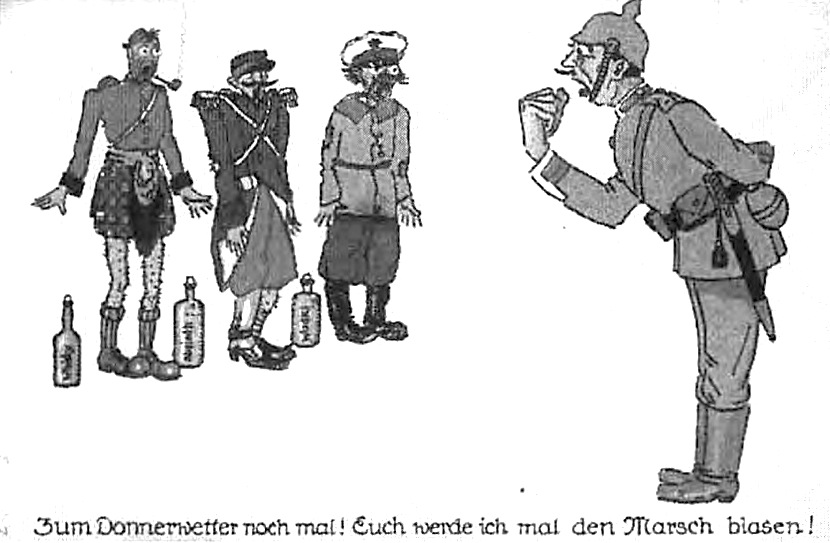
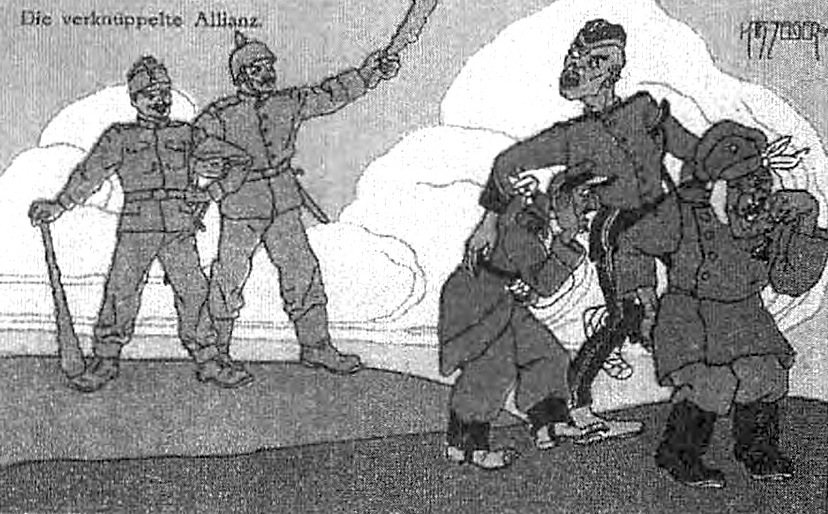
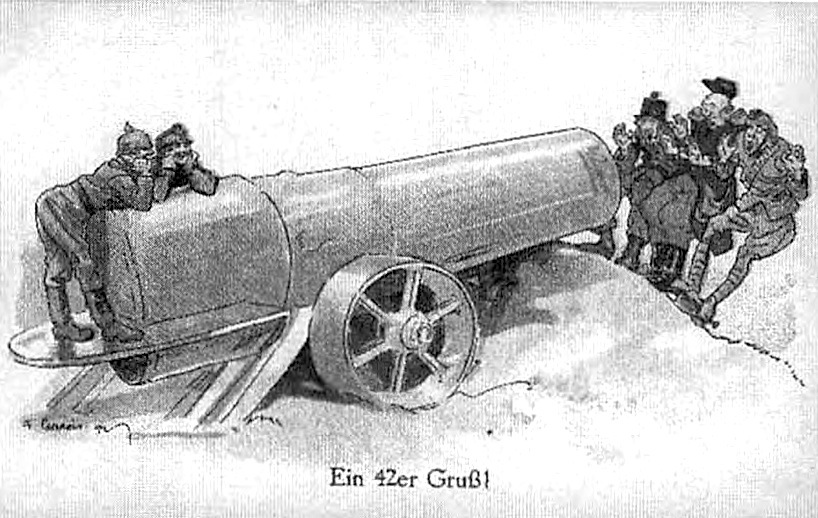


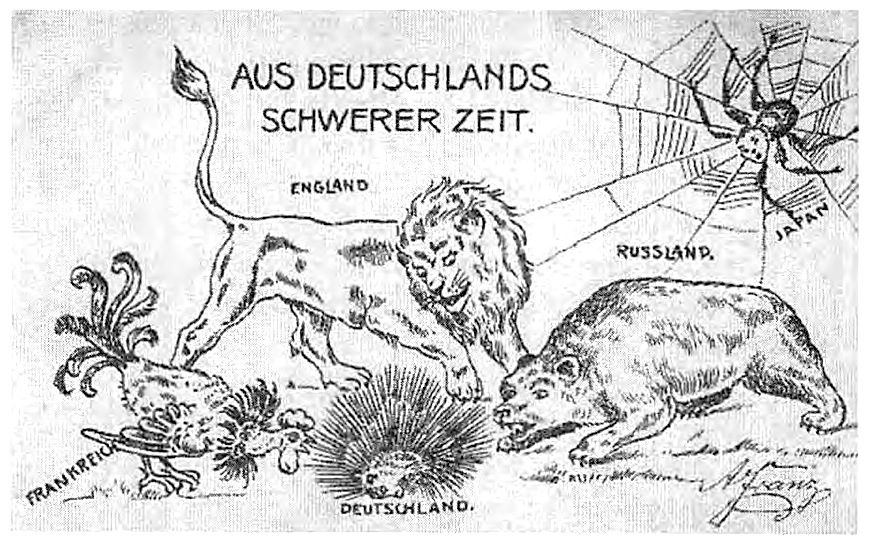
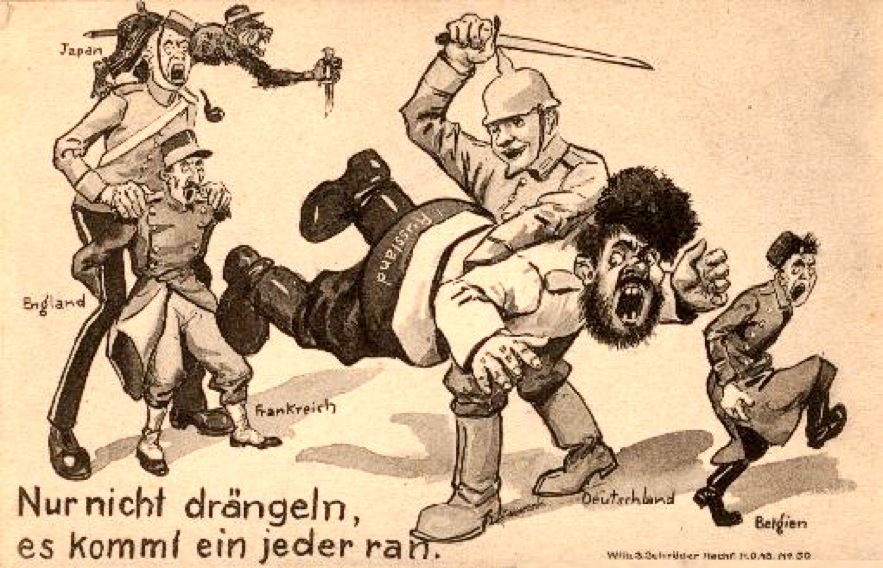
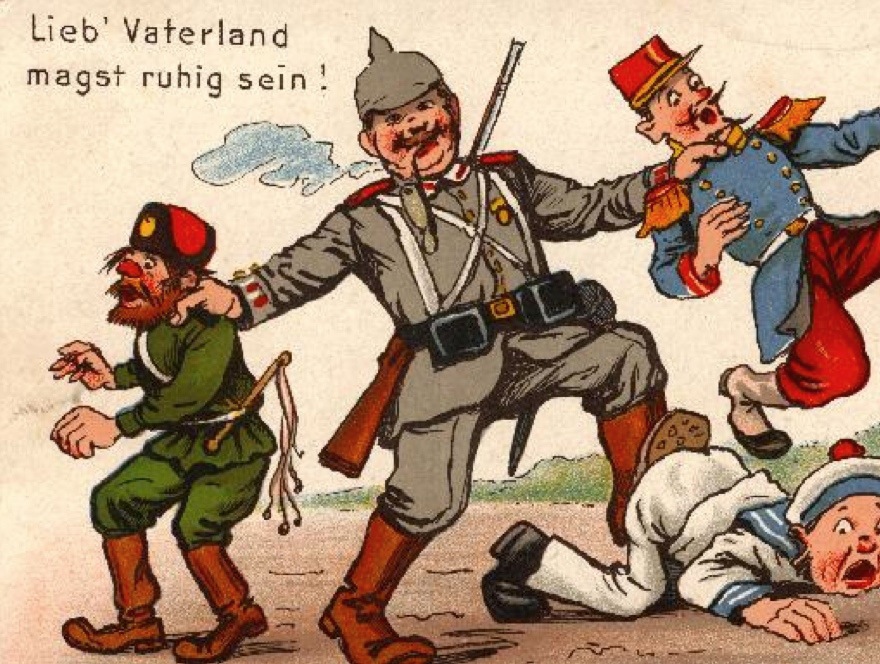
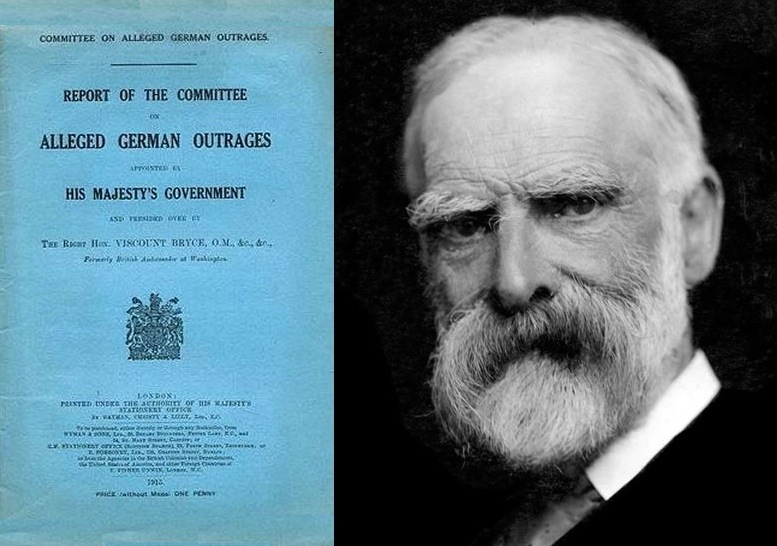
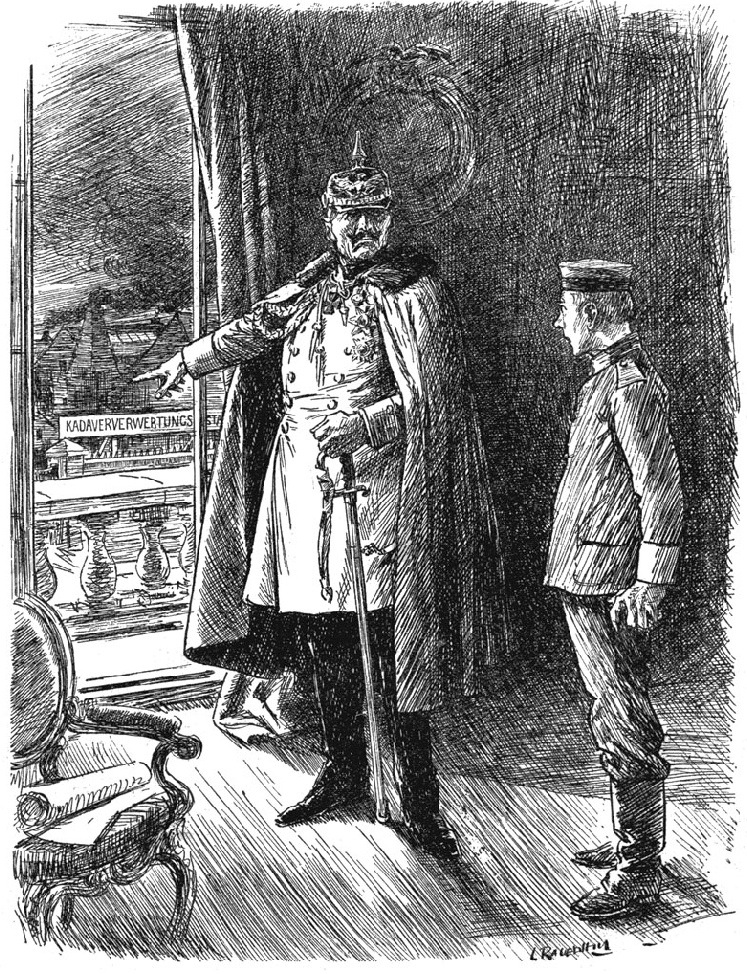


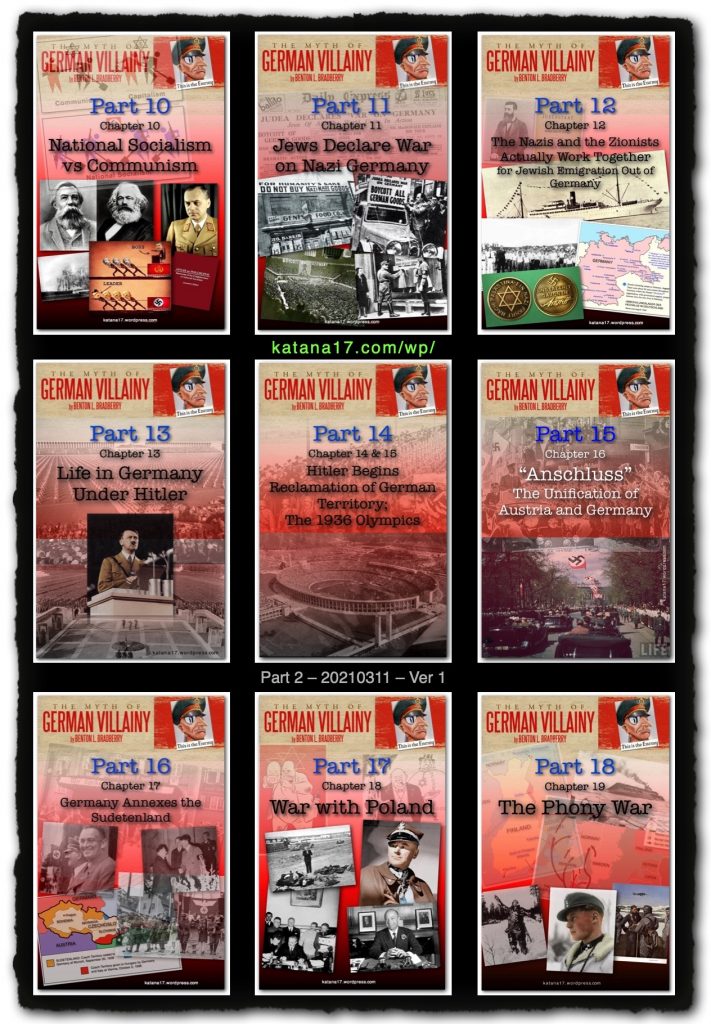


The army went on house to house gang raping sprees in axis countries
Pingback: Tell The Truth And Shame The Devil | Richard Presser's Blog - The Sceptical Bastard
Pingback: Multiculturalism: America’s Destruction III | Economic & Multicultural Terrorism
Pingback: Myth of German Villainy – The Holocaust is a Hoax
Kindly accept my apologies for dumping here but it’s not for publication so being short of time and this being the first comment box I found….
Glad you liked Erfurt World Service.
In case you have not seen it, be aware of the following:
http://www.sheffield.ac.uk/polopoly_fs/1.521361!/file/CooperCollection.pdf
—
9. World Service
A very important and very scarce run of the English Language Nazi newsletter. The
origins of World Service seem obscure and it seems that anti-semitic pamphlets may
have originated from this source and this name prior to the launching of the newsletter.
The first issue of World Service is dated 1st December 1933. The outlook of the
newsletter, quoted in full at the top of each issue is the best guide to its aims and
objectives:
“These leaflets are intended to be passed on from hand to hand amongst Aryans. The
“World Service”, which is issued in three languages, is not published with a view to
profits. Its principal aim is to enlighten ill-informed Aryans, irrespective of the state or
country to which they may belong. These information sheets, which deal with the
machinations of the Jewish under-world, form accordingly a necessary part of the
intellectual armoury of every Aryan. The communication of the matters dealt with to the
well-intentioned press is considered highly desirable.
Those holding similar views to our throughout the world, who recognize the fact that
systematic work, and search after the truth, cannot be carried on without pecuniary
outlay, will of a surety decide to send us some such small contribution as their means
may permit. This will enable us to carry out a considerable and effective extension of
our work. Every contributor may rest assured that every farthing, and every cent
subscribed will be put to the most conscientious uses only.”
World Service appears to have been published by U-Boden Verlag in Erfurt and edited
by Colonel Ulrich Fleischauer. Each issue comprises usually of 3 duplicated pages,
printed on one side only, but some are up to 12 sheets in length. They give extracts
from various sources of an anti-semitic and anti-zionist nature and were clearly
intended to provide the basis for Nazi anti-semitic ideas among fellow-travellers in
groups on the far right throughout Europe and America.
This newsletter is of the utmost rarity. It merits a passing reference to its editor by
Gloria Lebzelter in her “Political Anti-Semitism in England 1918-1939” but no other
reference work on this period that we have seen gives it any mention. It is important
for the links between British and other extreme right groups elsewhere.
World Service appears to have initially been issued in 3 languages but at the time of its
obvious demise, with the outbreak of war in. August-September 1939, it was
proclaiming its message in some 8 different languages. (In fact, BUCOP lists a part-set,
including some war years, at LWL, while Cohn, N. Warrant for genocide (1981) claims
that it continued into the war years and in 18 languages: “But by then Fleischauer had
been ousted and his organisation merged into the Institute of the NSDAP for Research
into the Jewish Question, at Frankfurt”. See also Bondy, L.W. Racketeers of hatred
(1946).)
This run of World Service comprises some 117 issues (of 123 issues?) covering the
period December 1933 to the (final?) issue of 15th July 1939. This run would appear to
lack Volume I/5, Volume IV/13, Volume V/13, and Volume VI/10, 11 and 12. However, a
number of the issues are double-issues, while Volume V/17 and 18 – a double issue –
is represented by the German-language edition only.
All issues are stapled and in good condition.
In addition there are 2 extra issues which do not seem to be part of the main
sequence but may be related to 2 of the missing numbers. They are
“The Truth on Spain” January 15th 1937. 4 pp.
“The Truth on Spain III” February 1937. 5 pp.
—
That was in 2009 iirc and since then who knows how much has “gone missing” / been “mislaid” in the way of the Public Records Office. Give it enough time and it will, of course, maybe in entirety.
The further reason for suspecting the papers are not in safe custody is the intro to the 1980 S1ngerm@n index was by some Sheffield academic (or student). The department dealing with research into freemasonry was closed down I was told some time back, and now the university appears more concerned with overseas objects of charity than indigenous if the line of ‘Dan Rayner’ can be followed. Not only cities of sanctuary but it seems, universities of sanctuary (or should that be safe places?)
Of course and ideally, good photographic scans (not just ocr) of the entire collection should be made and put in one or more distributed secure places and published online, but quite how all that might be accomplished – or even bulk access for copying obtained – I leave to you.
Manifestly the supplied email is false and sadly, nothing sent there will ever reach me.
Pingback: Bokrecension: The Myth of German Villainy
Great page, but the books not complete. The actual book has like 22/23 chapters.
Czar, I’m going through the chapters one by one, so eventually all chapters will appear.
Awesome. I appreciate uploading this. Thanks.
They forget to tell you in their lies that Josef Mengele was Jewish.
Pingback: Book - The Myth of German Villainy - Part 08 - Jews in Weimar Germany - katana17katana17
Pingback: Book - The Myth of German Villainy - Part 04 - The Russian Revolution of 1917 - katana17katana17
Pingback: Book - The Myth of German Villainy - Part 02 - Aftermath of the War in Germany - katana17katana17
Pingback: Book - The Myth of German Villainy - Part 03 - The Jewish Factor in the War - katana17katana17
Pingback: Book - The Myth of German Villainy - Part 05 - The Red Terror - katana17katana17
Pingback: Book - The Myth of German Villainy - Part 06 - The Bolshevik Revolution Spreads throughout Europe - katana17katana17
Pingback: Book - The Myth of German Villainy - Part 07 - The Nation of Israel - katana17katana17
Pingback: Jim Rizoli Interviews Hadding Scott — TRANSCRIPT - katana17katana17
Pingback: Book - The Myth of German Villainy - Part 09 - Hitler and National Socialists Rise to Power - katana17katana17
Pingback: Book - The Myth of German Villainy - Part 21 - Germany as Victim - katana17katana17
Pingback: Book - The Myth of German Villainy - Part 10 - National Socialism vs Communism - katana17katana17
Pingback: Book - The Myth of German Villainy - Part 11 - Jews Declare War on Nazi Germany - katana17katana17
Pingback: Book - The Myth of German Villainy - Part 12 - The Nazis and the Zionists Actually Work Together ... - katana17katana17
Pingback: The Myth of German Villainy: Author Ben Bradberry Interview — TRANSCRIPT - katana17katana17
Pingback: Book - The Myth of German Villainy - Part 16 - Germany Annexes the Sudetenland - katana17katana17
Pingback: Book - The Myth of German Villainy - Part 20 - The Allied Goal? Destruction of Germany! - katana17katana17
Pingback: Book - The Myth of German Villainy - Part 18 - The Phony War - katana17katana17
Pingback: Book - The Myth of German Villainy - Part 15 - “Anschluss” The Unification of Austria and Germany - katana17katana17
Pingback: Book - The Myth of German Villainy - Part 14 - Hitler Begins Reclamation of German Territory; The 1936 Olympics - katana17katana17
Pingback: Book - The Myth of German Villainy - Part 13 - Life in Germany Under Hitler - katana17katana17
Pingback: Book - Myth of German Villainy - Part 22 (last) - Winners and Losers - katana17katana17
Very good book:
GERMANY’S WAR: The Origins, Aftermath & Atrocities of World War II
by John Wear
Establishment historians characterize National Socialist Germany as a uniquely barbaric, vile and criminal regime that was totally responsible for starting World War II and carrying out some of the most heinous war crimes in world history. Germany’s … More
Get a copy
Amazon Stores Libraries
Friends’ Reviews
To see what your friends thought of this book, please sign up .
Community Reviews
Average rating 4.67 · 12 ratings · 1 review
Thomas Dunskus
Thomas Dunskus rated it it was amazing
over 5 years ago
Fools at war
This book is a synopsis of the political and military actions undertaken by the major powers involved in what, over a few years, would become World War Two. For a moment, I was wondering whether I should not knock off a star, because the arrangement of the sections could perhaps be improved, but then the text as such is so important that this material consideration does not really matter – hence five stars.
The first part deals primarily with Germany’s most powerful antagonists in WW2, the Soviet Union and the USA. The central portion of the text concerns illegitimate acts committed by these countries before, during and after the war, while the third portion deals with such actions on the German side.
Whereas, in the present book, the account of the preparations for a major war by the Soviet Union, both materially and strategically, is still based mainly on the works of Viktor Suvorov, a Soviet intelligence operative who defected to the UK in 1978, much of what Suvorov later published in the West has now been corroborated in full by a former high-ranking officer in the former East-German army, Bernd Schwipper, who speaks Russian fluently and has spent many in months in Moscow going through the war archives.
In his book “Deutschland im Visier Stalins” (Germany in Stalin’s gunsight) published in 2015, Schwipper clearly shows that in the period between the defeat of Poland by Germany and the SU in the fall of 1939 and the German invasion of the SU not quite two years later, the Red Army not only conducted any number of wars of aggression but was also preparing a major offensive against Germany and the rest of Europe that was about to be launched when the German army attacked the SU in late June 1941 .
Schwipper is uniquely qualified to present such a view as his perfect knowledge of the Russian language allowed him to study the Soviet files in the Russian archives in great detail; the reader of John Wear’s work can hence be sure that Wear’s analysis is bullet-proof. It would be highly desirable for Schwipper’s book to be published in English as well.
The manner in which the US prepared its entry into the war is better known, as the corresponding sources have been more easily obtainable, but Wear’s presentation is still valuable in that it provides us with an overall view of the details. The reader can see how obstinately the US – and FDR in particular – pursued a policy aimed at provoking either the Germans or the Japanese to fire the first shot and hence justify the US entry into the war. Various tactics were employed, be it the basically illegitimate supply of war material to Britain in various ways (e.g. “destroyers for bases”), the active cooperation of US forces with the British navy in securing transports to the point where German submarines were attacked by US ships before war had been declared, or, as early as October 1939, to allow only Soviet submarines to enter US ports in spite of the fact that the SU had just fought a war against Poland and annexed the Polish East.
Quite apart from such military measures, the US, in the summer of 1941, ordered the closing of all Japanese and German consulates in the country. At the same time, the US presented documents to the press which supposedly showed German plans to advance not only into South America, but into North America as well – clearly ridiculous forgeries, considering the state of German armaments at the time.
The author shows us that in spite of such unbelievable provocations, Germany remained inactive and that Roosevelt thus had to search for other means to justify an American entry into the hostilities – the Far East. The most blatant measure in this regard was the freezing of all Japanese assets in the summer of 1941 – months before the Japanese raid on Pearl Harbor.
That raid eventually took place on 7 December 1941. It could have been warded off by the US forces stationed in the area. As the author shows, however, while the US government had deciphered Japanese messages and therefore knew that an attack was imminent, the local commanders, Adm. Kimmel and Gen. Short were not informed – clearly a criminal act which led to greater damage to the American fleet and thus impressed the public to the point that it eventually approved FDR’s policy. Now there was total war.
In the Second Part of his book, the author describes the crimes committed by the Allies against Germans, such as the levelling of German cities, the expropriation and expulsion of some 15 million Germans from their native lands that had been undisputed parts of Germany for centuries, or the horrifying conditions obtaining in the camps where the German soldiers were held after their capitulation. In order to justify such illegal treatment of the prisoners, it was decided by the Allies not to define them as “prisoners of war” but as “disarmed enemy forces”, which allowed any kind of arbitrary measures to be taken against them, with the result that a considerable number of the prisoners died in the summer of 1945, after the end of the hostilities and in spite of the availability of food in western Europe.
Conditions were particularly bad in US and French camps; in some of the latter camps prisoners were without shelter even in 1946. On the British (and, surpringly, also on the Soviet side) the situation never degenerated to such levels if the local situation allowed it. The reason behind the Soviet attitude was perhaps that for the SU, it was a war of classes, not against peoples as such and whereas Hitler’s regime was considered to be a true enemy, Germans as such were not. The long-term result of this point of view was that the SU strove to build up some kind of national feeling in East Germany after the war, whereas in West Germany, any such tendencies were squashed.
The expropriation and explusion of German civilians had been mapped out in 1943, i.e. before the crimes later laid at the Germans’ feet had taken place or at least before they had become known; the measures were finally sanctioned at Potsdam. The persons concerned were for the most part women, children and the elderly who were driven from their homes under the most apalling conditions. If we allot to each of the expellees a fortune – both personal (real estate, housing, etc.) and public (hospitals, schools etc.) – of only some 50,000 US Dollars at present prices, we reach figures that approach a level of close to 1 000 (US) billion dollars (10 to the power of 12). It is estimated that more than one million persons died as a consequence of these expulsions, because – while officially they were to be carried out in an “orderly and humane” manner – more often than not this was not at all the case, especially if the expulsions took place in the early postwar period,
Hitler’s government was aware of these plans and therefore attempted to anticipate them by evacuating the German population as the eastern front approached. This reviewer was among the people concerned, in a march that began in mid-January 1945 in central Silesia; the temperature never went much above 0 degF, even in daytime, during the first couple of weeks. The evacuation of the Auschwitz camp took place at the same time, those marches are now commonly called “death marches”.
In the last section of the book, the author deals with the crimes committed by the Germans during WW2, many of which have been extensively treated in postwar trials and are certainly established facts. For some reason and without much activity on the side of revisionists, specific figures have undergone a significant albeit slow decrease over the decades for some of the most (in)famous camps. Also, some sources are still contradictory, for example the English Wikipedia entry on the camps in former Eastern Poland states that these camps (such as Treblinka etc.) were equipped with crematoria, whereas the corresponding German entry (as well as much of the literature) clearly states that they were not. It would, obviously, be highly desirable for such differences to be eliminated by further research.
Looking at the events of WW2 today, with the benefit of hindsight, the reviewer is struck by oddities and sudden political changes in the early postwar period. To begin with, it must be remembered that Britain and France had gone to war in 1939 to save Poland and Chechoslovakia from German domination, but when the war was over, the Western Allies did not hesitate to turn these countries over to Stalin’s dictatorship for the next half century.
Also, within a couple of years, the western Allies realized that while they had won the war, the Soviet Union, their former major and highly appreciated ally, had rapidly become a new enemy in a conflict that would last for nearly fifty years: the “Cold War”. In the face of this unexpected situation, they rapidly changed their attitude towards West Germany: rather than weakening the country (as Morgenthau et al. Would have liked, they strengthened it, incorporated it into the new Alliance of the Virtuous (NATO) and helped the Germans to make it the strongest power in Western Europe – within a mere decade, the West German economy had surpassed Britain, to say nothing of France.
At the same time, though, the West had to make sure that Germany would continue to be an obedient nation; educational as well as legal measures where introduced to achieve this. However, as usual, there is no such thing as a free lunch, even though the bill maybe presented rather late: The German self-esteem, over something like two generations, has been broken to the point that, in the near future, the foreigners now drifting into the country may cause the center of Europe to collapse and the rest of the continent may well slide into the crater thus formed, simply because the Germans, like Goetz in Sartre’s play “The Devil and the Good Lord” are now trying to make up for their former sins and, in doing so, create situations that may soon become uncontrollable.
It reminds the reviewer of some lines written by Schiller:
“This is the curse of every evil deed
That propagating still, it brings forth evil”.
*
https://www.unz.com/book/john_wear__germanys-war/
*
John Wear articles https://www.inconvenienthistory.com/columnists/2873
John Wear was born July 11, 1953 in Houston, Texas. John graduated with a degree in accounting from Southern Methodist University in May 1974 and passed the CPA exam later that year. He graduated from the University of Texas Law School in December 1977 and passed the Texas bar in February 1978. John, who is currently retired, worked most of his career as a CPA. His most recent employment was from 1994 to 2008 with Lacerte Software, a tax division of Intuit Corporation.
John Wear is the author of the book Germany’s War: The Origins, Aftermath and Atrocities of World War II. This book is published by American Free Press and is also sold by The Barnes Review (TBR) and Amazon. John is also on the Board of Contributing Editors of TBR and to date has had 44 articles published by TBR. His work has been highly praised by Willis Carto, Paul Angel, John Tiffany and many others.
John has a new website located at https://wearswar.com/ thanks to the generous help of two friends. In addition to publishing John’s articles, this website has a Nuremberg Farce quote of the week section, a monthly Wears War movie review, and a Fake History Lie of the Month section. Readers are encouraged to sign up to receive new posts for free from this website by email. The goal of our website is to bring history in accord with the facts while being entertaining and enjoyable to read.